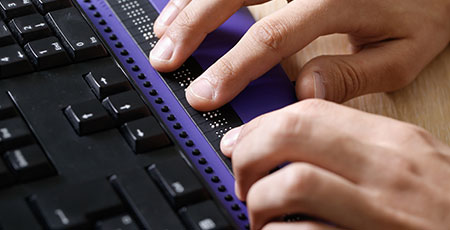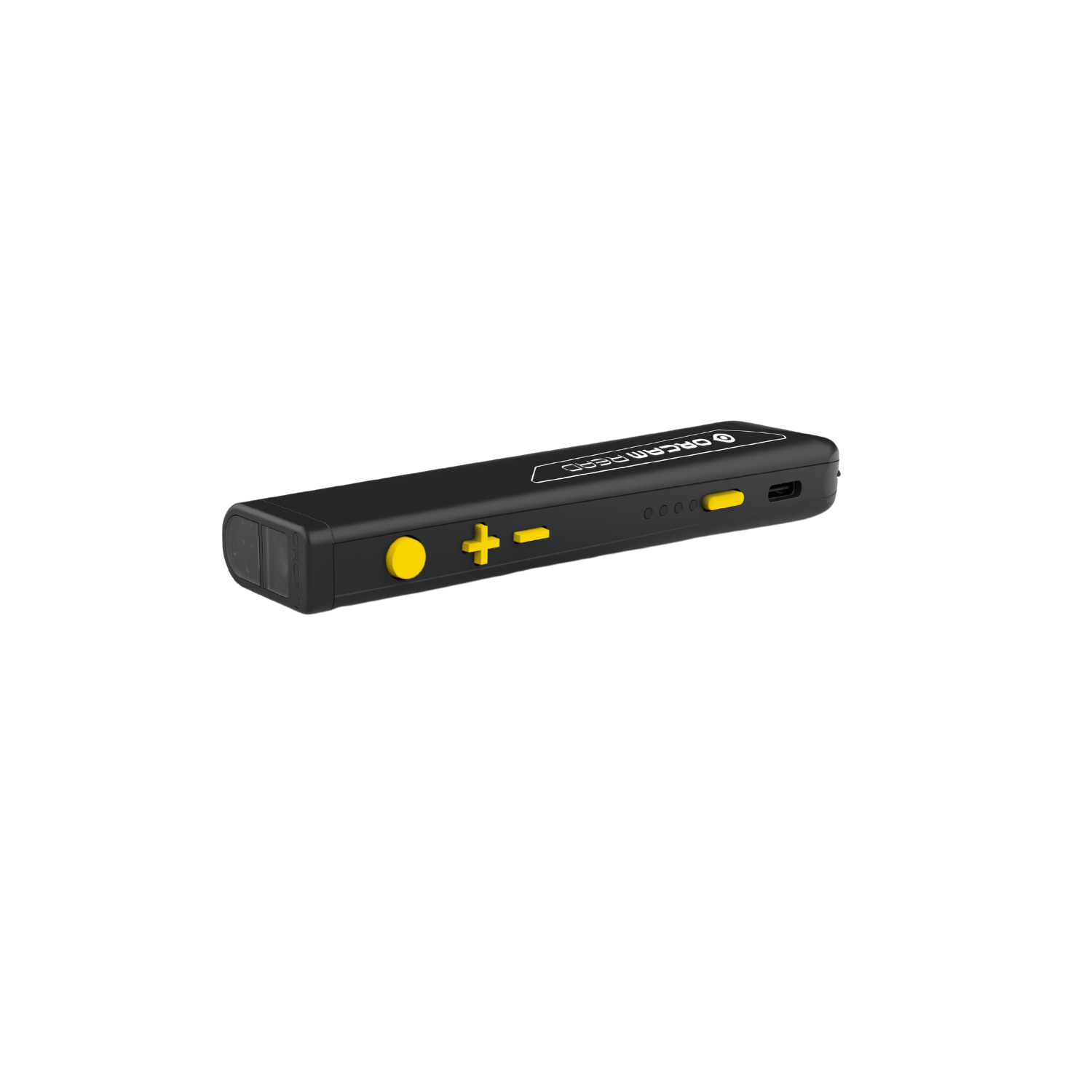Braille Displays and Notetakers: Must-Have Tools for Learning and Work
Wiki Article
Discover Ingenious Devices Developed for the Aesthetically Damaged
The growth of innovative tools for the visually damaged represents a considerable advancement in availability and self-reliance. Technologies such as wise glasses with AI abilities and mobile applications created to supply acoustic descriptions are improving everyday experiences for users. Additionally, wearable tools that employ haptic responses boost ecological understanding, while contemporary Braille technologies provide brand-new means to engage with text. As these tools remain to evolve, their influence on the lives of those with aesthetic disabilities raises important questions regarding the future of inclusivity and freedom in various aspects of life. What exists ahead in this technological landscape?Smart Glasses for Navigating

Smart glasses designed for navigation are revolutionizing the means visually impaired people engage with their atmosphere. These advanced tools utilize a combination of video camera innovation, fabricated knowledge, and auditory feedback to offer real-time details concerning surroundings. By utilizing challenge detection systems, wise glasses can notify individuals to prospective dangers, allowing safer mobility in both unknown and familiar settings.
The assimilation of GPS innovation better enhances navigation capabilities, allowing users to receive acoustic directions as they relocate. This hands-free method not only fosters self-reliance however also equips aesthetically impaired individuals to navigate urban landscapes with increased self-confidence. In addition, numerous clever glasses are equipped with attributes that recognize spots and road signs, supplying contextual information that improves the user experience.
Moreover, the advancement of these gadgets is constantly advancing, with business working to boost the accuracy of object recognition and increase the range of navigational attributes. As smart glasses end up being much more economical and easily accessible, they hold the possible to substantially change day-to-day live for visually impaired individuals. Inevitably, these ingenious tools stand for a vital action toward inclusivity, offering enhanced wheelchair and a higher sense of freedom for people navigating the globe around them.

Mobile Application for Daily Living
Just how can mobile applications enhance the lives of aesthetically impaired people? Mobile applications are revolutionizing the means aesthetically damaged customers navigate their environments, handle everyday jobs, and accessibility info. These applications provide important assistance with different functionalities, cultivating self-reliance and improving lifestyle.Several ingenious mobile applications are designed especially for everyday living. As an example, apps like Be My Eyes connect aesthetically damaged customers with sighted volunteers using video telephone calls, permitting them to get real-time assistance with tasks such as reviewing tags or browsing unknown areas. Seeing AI, established by Microsoft, uses artificial intelligence to define surroundings, checked out message, and determine objects, successfully transforming a smart device into an effective device for daily aid.
Furthermore, navigating applications customized for the visually impaired, such as Aira and BlindSquare, use audio-based instructions and ecological information, allowing customers to traverse their surroundings safely and with confidence. Beyond navigating and instant support, mobile apps additionally support company and task monitoring, with features that assist users establish tips, create order of business, and track appointments. In recap, mobile applications act as important sources, empowering aesthetically impaired individuals to lead more independent and satisfying lives.
Wearable Technologies for Assistance
Empowerment with innovation is progressively noticeable in the world of wearable tools made to help aesthetically damaged people. These cutting-edge tools integrate flawlessly right into daily life, improving navigating and supplying crucial responses to users. Smart glasses geared up with cams can identify faces and check out text out loud, permitting users to interact even more with confidence in specialist and social settings.Another notable advancement is the usage of haptic comments systems in wearable devices. These systems use resonances or other tactile signals to convey info about the customer's atmosphere, such as barriers or modifications in terrain, improving mobility and safety and security. Wearable technologies additionally consist of wristbands that connect to smart view it devices, signaling individuals to notifications via subtle vibrations, hence improving connection without reliance on visual cues.
As these innovations remain to advance, they are not just enhancing independence for aesthetically impaired people but additionally promoting a greater sense of addition in society. By linking the gap between difficulties encountered in daily living and the possibility for autonomy, wearable technologies work as essential devices in the mission for equality and empowerment for those with aesthetic problems.
Audio Summary Tools
Audio description devices play a crucial role in enhancing accessibility for aesthetically impaired people, offering them with the ability to involve with visual media. Screen readers for the blind. These devices use narrated descriptions of key aesthetic elements in movies, tv programs, and live efficiencies, guaranteeing that individuals can completely understand the context and feelings communicated through visualsSound description can be integrated into numerous platforms, including streaming solutions, cinema testings, and live theater. Lots of preferred streaming services now include audio summary as an accessibility feature, allowing viewers to select it conveniently. In addition to conventional media, specialized applications additionally exist, providing audio summaries for art exhibitions, galleries, and other cultural occasions.
The efficiency of audio description depends upon the skill of the narrators, who must communicate aesthetic details succinctly without taking away from the original sound. Advancements in this area are additionally leading the way for even more personalized experiences, where customers can readjust the degree of detail and pacing according to their choices.
Braille Innovations and Devices
Braille advancements and gadgets have considerably changed the way aesthetically impaired individuals communicate with message and info. Modern innovations have led to the advancement of functional devices that improve literacy and independence among users.
Additionally, portable Braille notetakers combine typical Braille input with contemporary capabilities, facilitating note-taking, scheduling, and record editing and enhancing on the move. Braille displays and notetakers. These compact tools usually include text-to-speech capabilities, linking the void between Braille and auditory details
In addition, ingenious Braille printers have arised, permitting customers to generate Braille tags, records, and instructional materials effectively. This access fosters better involvement in expert and academic environments, ultimately promoting inclusivity.
In addition, research into smart Braille innovations remains to broaden. Devices that integrate synthetic intelligence are being explored to provide real-time navigating help view it and contextual information, enhancing the individual experience in diverse setups. In general, these innovations reflect a dedication to equipping visually damaged individuals through innovation, guaranteeing they can conveniently see here now gain access to and engage with the world around them.

Verdict
The improvement of cutting-edge tools for the visually impaired considerably enhances freedom and quality of life. These modern technologies not just foster higher addition however additionally promote freedom in day-to-day activities, eventually adding to an extra easily accessible and equitable culture for aesthetically impaired people.As clever glasses end up being more affordable and accessible, they hold the potential to dramatically change daily life for aesthetically impaired individuals. Mobile applications are revolutionizing the means aesthetically impaired users browse their environments, handle day-to-day tasks, and accessibility information. Applications like Be My Eyes attach visually damaged customers with sighted volunteers through video clip phone calls, permitting them to receive real-time help with jobs such as reviewing tags or navigating unknown rooms.Additionally, navigation apps customized for the aesthetically damaged, such as Aira and BlindSquare, offer audio-based instructions and environmental info, making it possible for users to traverse their surroundings safely and confidently.The innovation of innovative tools for the visually damaged dramatically improves self-reliance and high quality of life.
Report this wiki page